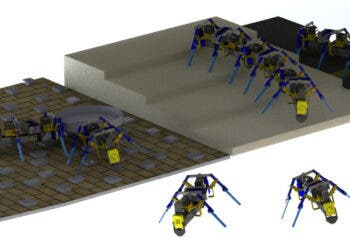A conversation is a two-way street where cooperation is paramount. When cooperation between two or more people ends, like in the heat of an argument when shouting ensues, the conversation is officially over too. But although humans are the only Earthlings gifted with the power of speech, researchers found at least two other species, namely bonobos and chimpanzees, make use of conversational cooperation.

The team made of researchers from Max Planck‘s Institute for Ornithology and Institute for Evolutionary Anthropology monitored the communicative gestures of mother-infant pairs in four communities: two of chimpanzee and two of bonobos. They chose to follow mother-infant interactions because these are somewhat analogous to human mother-baby ones, in the sense that these are limited to unarticulated sounds and gestures.
After two years of closely following the bonobos and chimps from the Salonga National Park and Luo Scientific Reserve in the Democratic Republic of Congo, researchers came to the conclusion that communicative exchanges in both species resemble cooperative turn-taking sequences in human conversation. In other words, the mothers and infants recognized the pair was engaged in a conversation, and each took turns to signal their thoughts or listen.
There were some slight, but important differences in the way the two species converse, too. Marlen Froehlich, one of the lead authors of the study published in Scientific Reports, said, “(for bonobos) gaze plays a more important role and they seem to anticipate signals before they have been fully articulated.” Chimps, on the other hand, take their time and seem to use more complex cooperative elements like signaling, pausing and responding.
“By taking into consideration intra- and inter-species variability and by focusing on the mother-infant dyad, our results showed that all observed dyads across groups frequently engaged in turn-taking sequences to negotiate joint travel. They established participation frameworks via gaze, body orientation and the adjustment of initiation distance, and they used adjacency pair-like sequences characterized by gesture-response pairs and response waiting. Regarding temporal relationships between signals and responses, we found that mother-infant dyads of both species used the whole spectrum of responses, including immediate, overlapping and even delayed responses. Immediate responses match the temporal relations between turns in human speech consisting of relatively little cultural variation (e.g. overall cross-linguistic median of 100 ms, ranging from 0 ms in the English and Japanese culture, for instance, to 300 ms in the Danish and Lao culture),” the authores wrote in the study.
Following the way great apes cooperate, interact and converse in their highly complex societies might one day unravel the origin of human speech, a subject of great interest but also debate among scholars. Many agree, however, that the first precursors of speech were gestures. As such, bonobos might be the most representative animal model for understanding the very elemental prerequisites for human speech.
“Communicative interactions of great apes thus show the hallmarks of human social action during conversation and suggest that cooperative communication arose as a way of coordinating collaborative activities more efficiently,” says Simone Pika, head of the study.






